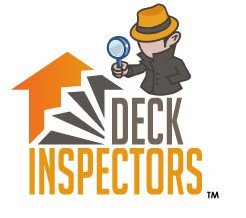In California’s ever-evolving building code landscape, architects and designers are at the forefront of shaping structures that are not only aesthetically appealing but also safe, resilient, and code-compliant. Two of the most impactful regulations to emerge in recent years, SB 326 and SB 721, have brought a spotlight to the structural safety of exterior elevated elements (EEEs), including balconies, decks, and walkways in multifamily housing. While these laws were primarily aimed at inspection and maintenance, they offer valuable design opportunities for forward-thinking professionals.
By incorporating proactive strategies from the design phase, architects and designers can help ensure that new construction and renovations will not only meet current legal requirements but also minimize future maintenance and inspection burdens. Here’s how to future-proof your projects against the challenges of SB 326 Inspections and their rental-focused counterpart, SB 721.
Design with SB 721 & SB 326 Inspections in Mind
A key component of both SB 326 Inspections and SB 721 is the requirement for visual inspections and, when necessary, destructive testing of EEEs every six to nine years. This creates a strong incentive to design structures that facilitate easier, safer, and less invasive inspection and maintenance.
Design Tip 1: Expose Structural Elements Thoughtfully
Rather than enclosing beams and supports behind stucco or siding, consider exposing key structural connections in a clean, architectural way. Not only does this reduce the likelihood of hidden water intrusion, but it also allows for a straightforward visual inspection without damaging the structure, saving owners time and money in the long run.
Design Tip 2: Choose Materials Strategically
Use durable, low-maintenance materials that resist rot, rust, and moisture damage. Pressure-treated lumber, galvanized or stainless-steel connectors, and high-quality composite materials can extend the life of EEEs and improve inspection outcomes. When using concrete, ensure that rebar is properly protected from corrosion with adequate cover and waterproofing.
Design Tip 3: Incorporate Slope and Drainage
Flat surfaces are water traps. Designing balconies and decks with a slight slope and integrating proper drainage systems helps prevent pooling and extends the life of materials. Good drainage is not only a best practice—it’s a key indicator inspectors look for during SB 326 Inspections.
Building for Long-Term Compliance
Compliance shouldn’t be an afterthought. It can be an integral part of a project’s value proposition, especially for multifamily developments targeting long-term market viability.
Best Practice 1: Plan for Maintenance Access
Ensure that access points for maintenance crews are included in the plans. Removable panels or inspection ports provide convenient access to otherwise concealed connections.
Best Practice 2: Document Materials and Assembly
Provide detailed as-built documentation for owners and property managers. These records can simplify future SB 326 Inspections by providing inspectors with critical background information on material types, installation methods, and waterproofing layers, thereby reducing the need for invasive testing.
Best Practice 3: Collaborate with Inspectors Early
Consulting with a qualified deck and balcony inspection firm during the design phase can identify potential pitfalls and help integrate compliance strategies from the ground up.
Future-proofing means thinking beyond occupancy. With SB 326 and SB 721 reshaping the rules, smart design today translates into safer buildings and smoother inspections tomorrow. Partner with our Southern California team to ensure your next project is built for safety, longevity, and full compliance.
Deck Inspectors for Southern California is happy to offer our services in Los Angeles County, Riverside County, Orange County as well as San Diego County and all Southern California surrounding areas like: Los Angeles, Irvine, Long Beach, La Jolla, Glendale, Pasadena, Santa Ana, Huntington Beach, Dana Point, Burbank, Santa Monica, Anaheim, Temecula, Encinitas, Chula Vista, Vista, Mesa, San Diego, Oceanside, Escondido, Carlsbad, Poway, Mission Viejo, and El Cajon.



